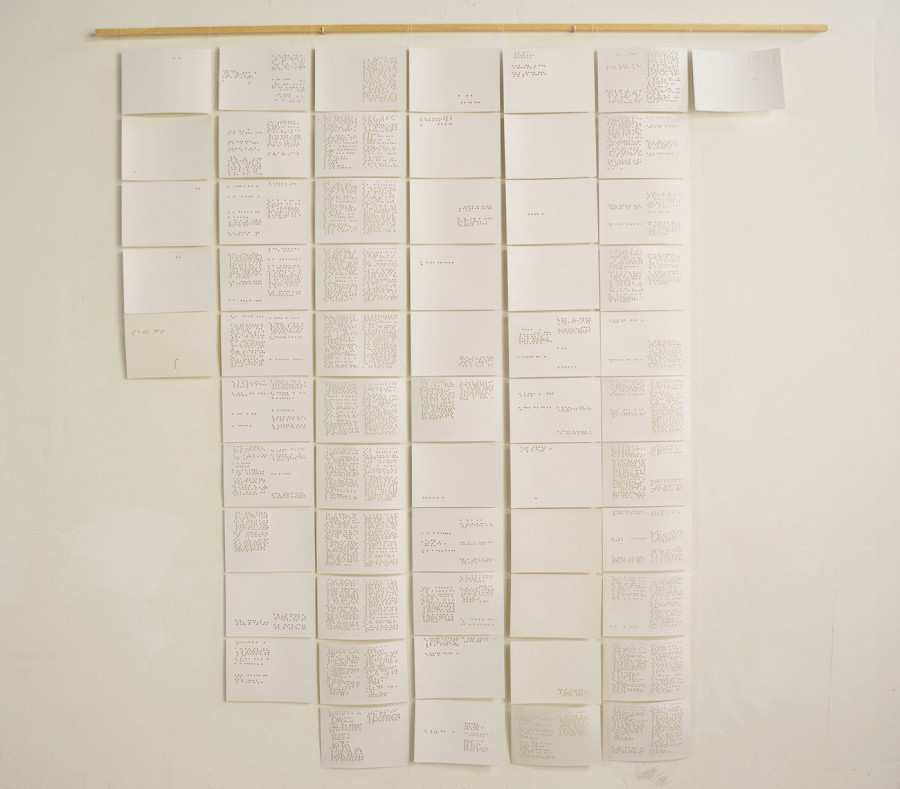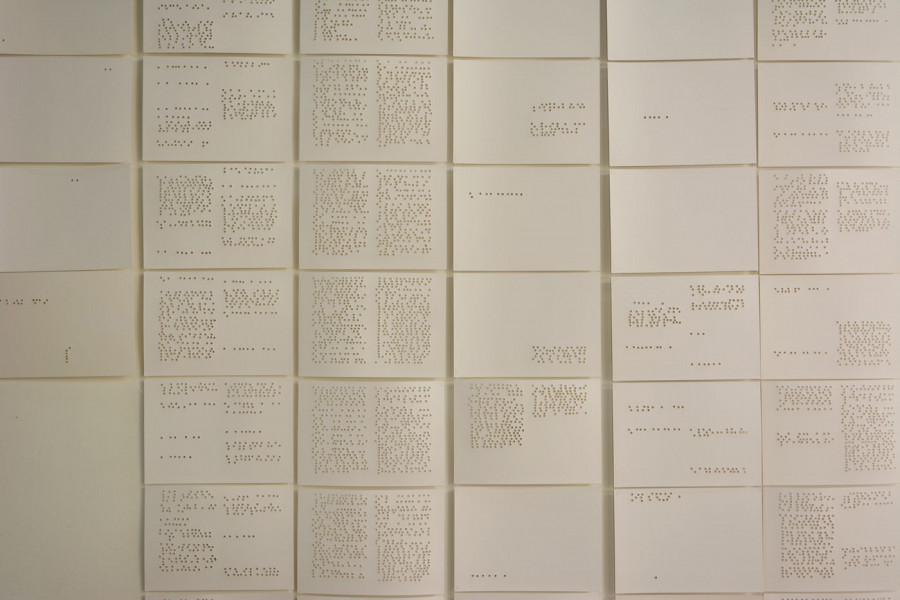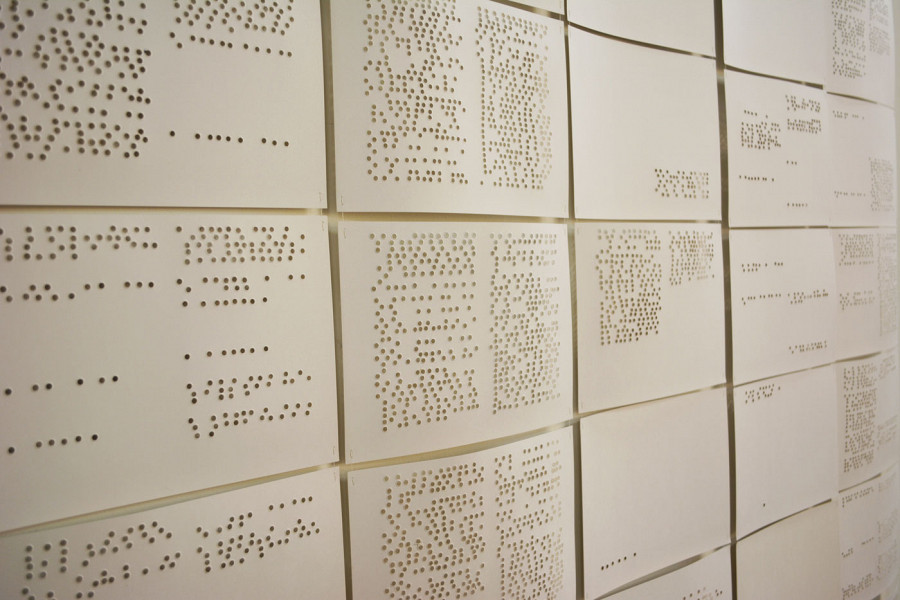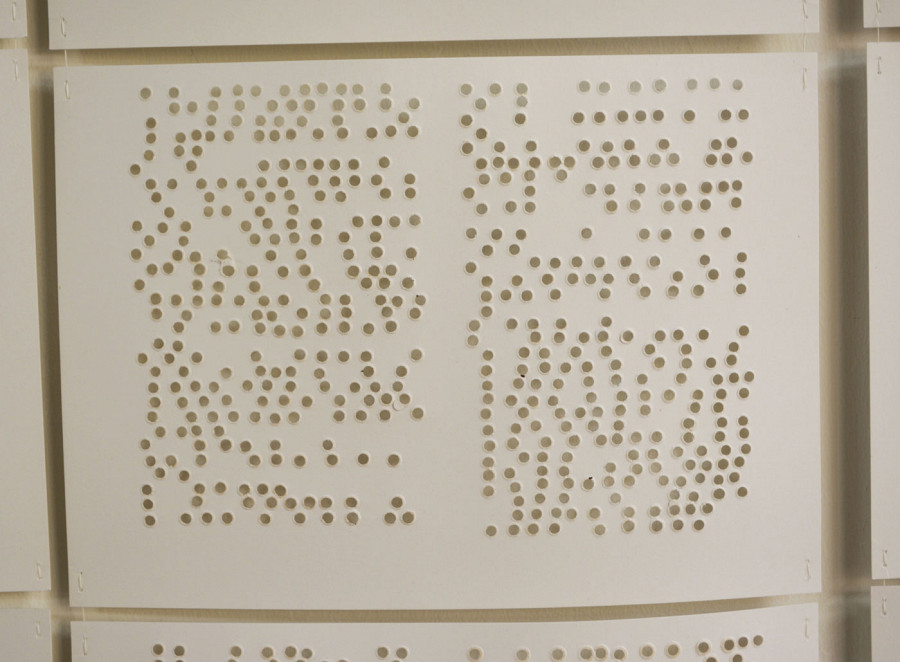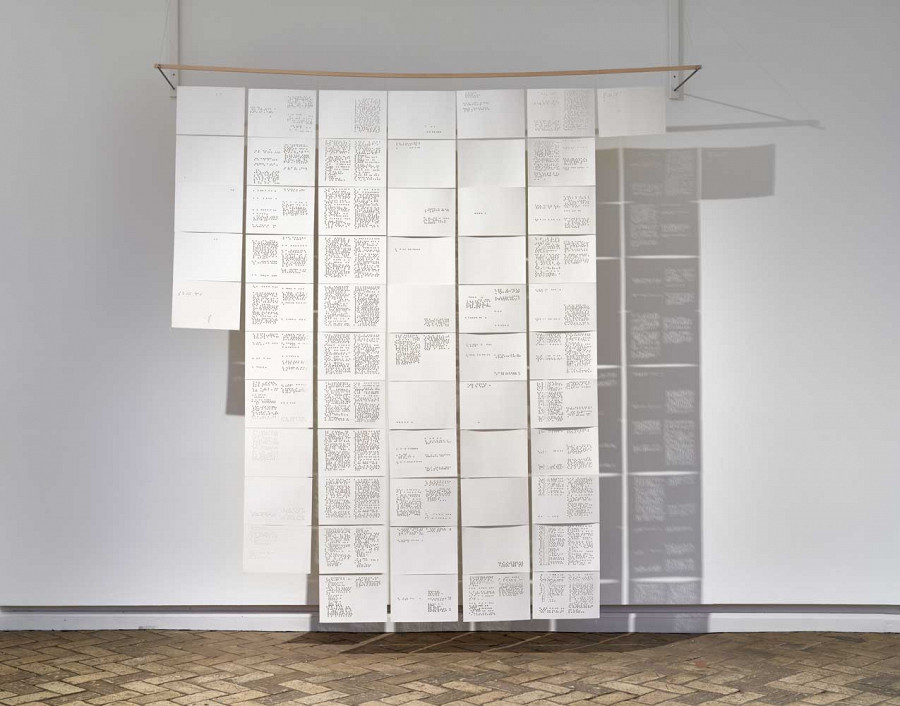
“The Weaver” (2018)
The perforated card was developed by Joseph-Marie Jacquard in 1805 to control the loom of the same name. A perforated card is a mechanical memory card made of paper into which holes has been punched. These holes represent a sort of code. No perforation means no change in the current status; a hole in the card leads to changes in the machine's function. This means for the loom: if the needle hits the card, the thread is raised, if it hits a hole, the thread is lowered, and the woven fabric is pierced.
The pattern of my punched cards series represents the text of the naturalistic drama "The Weavers" by Gerhardt Hauptmann. It was the first play to describe whole population layer, the weavers. In the drama Hauptmann addresses the Silesian Weber Uprisings of 1844, which reached the public sphere for the first time and thus raised social questions for the first time. Each punch card corresponds to a double page of the play. A hole means a change, so in my work it is the words which describe the actions of the weavers in Hauptmann's text, because their actions during the weavers" revolts led to a change in social conditions.
Thus, the punch cards, with their pattern of holes and no holes, show the structure, the pattern of the drama and, like the drama itself, a spectacle. Thus, the work refers both to the origin of the punched card as a mechanical storage medium, which was used firstly used in craftsmanship for the loom, and secondly to the importance of the actions of the weavers in the weavers' revolts. This meaning is underlined by the choice of the medium of the punched card, historically as the first data carrier, for the representation of this historical event.
